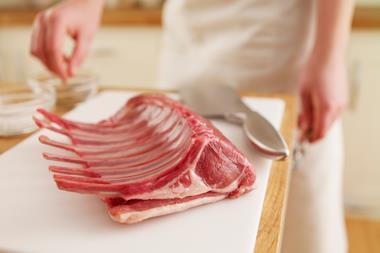”Why would we? We don’t test for hedgehog either.” Iceland CEO Malcolm Walker’s explanation of why supermarkets had never tested for horsemeat was unconventional from a public relations point of view, but struck at the heart of a problem that food scientists have been grappling with ever since.
Neither the supermarkets nor their suppliers ever expected to find horsemeat, so they never looked for it. Species testing was commonly used to guard against the kind of cross-contamination that would happen by accident - between beef and lamb processed in the same factory, for example. It wasn’t designed to test for fraudulent adulteration.
Horsegate raised the frightening possibility not just of contamination with horsemeat, but with any cheap substitute. Suddenly the industry had to think about what former US Defence Secretary Donald Rumsfeld famously called “unknown unknowns: the ones we don’t know we don’t know”.
“It’s all very well measuring the amount of DNA, but what does it mean to the meat processor?”
Barbara Hirst, Reading Scientific Services
Chris Wells, head of food safety and product integrity at Leatherhead Food Research, sums up the challenge: “We want to move from a situation where we are asking, ‘Here is my sample, has it got horse in it?’ to ‘Here is my sample, has it got anything else in it?’”
So, more than 12 months on from Horsegate, what progress has been made to adapt testing technologies to the new reality, and what new developments are on the horizon?
Broadly speaking, there are two main types of meat species tests: polymerase chain reaction (PCR), otherwise known as DNA tests, and Elisa tests, which test for proteins rather than DNA. Of the two, Elisa is cheaper - costing less than half of PCR - and much faster, taking as little as 15 to 30 minutes compared with 24 hours for PCR. However, PCR is more sensitive and is capable of detecting minute amounts of contaminate meat, often well below 1%.
This means Elisa tests are only really suitable for day-to-day screening in meat-processing plants. To comply with regulatory requirements, it is necessary to test accurately for low levels of contamination that only PCR can pick up. Under FSA guidelines - currently out for consultation - anything above 1% would have to be withdrawn from the market, anything between 0.1% and 1% would need to be investigated and only food with contamination levels of less than 1% would be acceptable.
Some food companies have even started using PCR tests for daily screening. Nestlé, for example, has recently developed a PCR-based test in-house, with a detection limit of 1%. “We use this method on a daily basis because it is one of the requirements for the release of products from our factories,” says Geoffrey Cottenet, a scientist at the Nestlé Research Center in Lausanne, Switzerland. “It allows us to comply with legislation and to ensure the authenticity and traceability of our beef-based products.”
Nestlé’s new test can also detect horse, pork and beef simultaneously. By testing for different contaminants at once, multi-species tests keep costs down and save time.
Indeed, multi-species testing has become the watchword for meat testing in general. A new generation of multi-species tests - using both Elisa and PCR - is under development that could protect against unexpected risks by screening for large numbers of species at once.
Safeguard Biosystems, for example, has developed a PCR-based test that can screen for 12 species, including dog, cat, rat and donkey meat, which are only likely to find their way into food products as a result of fraud. The test has the added benefit of speed, with results available in six hours as opposed to 24 hours.
“Given that so many things can potentially go wrong, the ability to do multi-species testing is vital,” says Professor Chris Elliott of Queen’s University, Belfast, who was appointed by the government to complete a review of the UK food supply chain in the wake of Horsegate.
Greater accuracy
However, improving testing is not just about being able to test for more and more species at once. Another challenge is to accurately quantify how much unwanted foreign tissue is in a given sample.
“It is all very well measuring the amount of DNA, but what does that mean to the meat processor or retailer if you can’t correlate it to an amount of meat?” says Barbara Hirst, lab manager for DNA and protein at Reading Scientific Services.
When studying samples at or around the 1% mark - where small variations can make the difference between having to withdraw a product or being able to keep it on shelves - it is vital to be able to measure the quantity of foreign tissue precisely.
“So many things can potentially go wrong. The ability to do multi-species testing is vital”
Professor Chris Elliott, Queen’s University, Belfast
There has been significant progress over the past year in this regard, says Hirst. One example is PCR tests based on nuclear DNA - as opposed to mitochondrial DNA - which are already commercially available. Real-time tests that amplify DNA at the same time as they detect it have also helped to improve the accuracy of DNA testing.
This level of sophisticated analysis is unnecessary if suppliers or retailers simply want to scan products in the factory. There, the priority is on developing affordable tests that can be used quickly and easily to raise a red flag if anything is amiss.
This is where the quicker and cheaper Elisa tests come into their own. Experience of antibiotic contamination tests in the dairy industry suggests Elisa meat screens could ultimately take as little as five minutes.
Significant advances are also being made that will see the bulky readers for Elisa testing - currently the size of a small microwave - replaced by smaller devices.
“Within the next few years we will be probably able to do it on mobile phone - using the optics of the built-in camera as the detection device,” Elliott says.
Another potential tool at the factory end is the so-called ‘electronic nose’, a technology that is normally used to detect odours or flavours. Wells says researchers are now looking at whether it could be relevant in the fight against food fraud. An electronic nose inserted into meat would not be able to test for particular species, but might be able to establish whether a sample is ‘normal’ or ‘abnormal’ and therefore alert suppliers, retailers, auditors and regulators that further testing may be required.
It will take some time to work out which technologies work best and to establish standardised techniques that solve the challenges that horsemeat has thrown up both in the lab and at the factory level. But looking back, it is impressive what has already been achieved in the space of a year.
If, perish the thought, Malcolm Walker’s hedgehogs do enter the supply chain at some point in the future, the industry is at least arming itself with the weapons it needs to prevent them reaching our dinner plates..


















